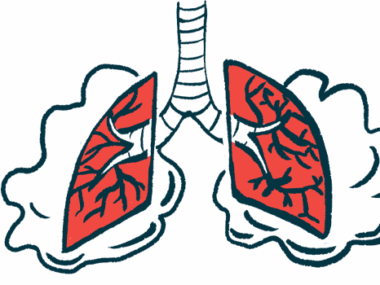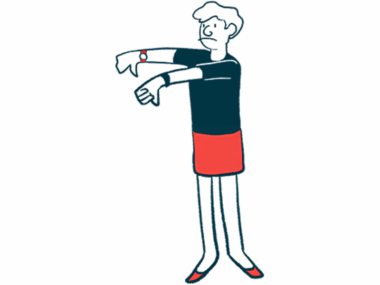Higher-dose nusinersen may further improve SMA outcomes: Developer
Clinical trial shows motor function gains, slowed neurodegeneration
Written by |

A higher-dose regimen of nusinersen, currently up for approval in the U.S., may provide further benefits to people with spinal muscular atrophy (SMA) relative to the approved Spinraza regimen, according to its developer, Biogen. Nusinersen is marketed as Spinraza.
The Phase 3 DEVOTE clinical trial (NCT04089566) part C showed that the higher-dose regimen further improved motor function and slowed neurodegeneration in children and adults who had been on the approved 12 mg Spinraza dose for approximately four years. Results were presented last month at the 2025 Annual SMA Research & Clinical Care Meeting, hosted by Cure SMA.
“This effort to optimize the dosing of [Spinraza] represents an important advance for the field and has the potential to reshape treatment strategies and further improve outcomes for individuals with SMA,” Stephanie Fradette, head of the neuromuscular development unit at Biogen, said in a written Q&A with SMA News Today.
The experimental dosing regimen comprises fewer loading doses — two 50 mg doses 14 days apart — and 28 mg maintenance doses every four months. The U.S. Food and Drug Administration is expected to decide on whether to approve this regimen of nusinersen on Sept. 22. Applications are also under review in Europe, Japan, and other locations.
“The findings from Part C of the DEVOTE study further strengthen the growing body of evidence supporting the potential benefits of the higher-dose regimen of nusinersen,” Fradette said in a company press release.
Higher-dose nusinersen tested across age spectrum, SMA severity
SMA is mainly caused by mutations in the SMN1 gene that lead to low levels of SMN protein and the progressive loss of motor neurons, the nerve cells that control movement. Spinraza is an approved injectable therapy that works by increasing SMN levels produced from the SMN2 gene, a backup gene for SMN1.
According to Fradette, the DEVOTE study was designed to test higher-dose nusinersen across the age spectrum (newborns to age 65), disease severity (two to four copies of the SMN2 gene), and functional status (those who can walk independently and those who cannot). Generally, a higher number of SMN2 gene copies is associated with less severe disease.
Previously reported findings from the pivotal part B of DEVOTE showed the higher-dose group had a sharper drop in levels of neurofilament light chain (NfL), a marker of nerve cell damage, and a 27% reduction in the risk of death or permanent need of a ventilator since changing from the approved dosing. This was shown in 75 symptomatic infants with infantile-onset SMA ( occurring within six months of age), who had not been previously treated with SMA therapies. Similar results were seen in a small group of patients with late-onset SMA (occurring after six months of age).
In DEVOTE part C, most participants experienced motor function improvements after transitioning to the higher-dose regimen. Among the participants with a Revised Upper Limb Module (RULM) score below the maximum at study start, 62% experienced improvements after about 10 months. The RULM score assesses motor function in the upper limbs.
Similarly, 53% showed improvements on the Hammersmith Functional Motor Scale – Expanded (HFMSE), which evaluates overall motor function. Many of these participants had clinically meaningful improvements , which means a 3-point improvement on HFMSE and a 2-point improvement on RULM.
These emerging data indicate that additional gains in function might be possible even in those with established disease who have been on therapy for years.
The Global Impression of Change scale, as assessed by a caregiver, showed improvements in 71% of the participants since switching to the higher-dose regimen of nusinersen.
“These emerging data indicate that additional gains in function might be possible even in those with established disease who have been on therapy for years,” Richard Finkel, MD, director of the Center for Experimental Neurotherapeutics at St. Jude Children’s Research Hospital, said in the press release.
The higher-dose regimen had a safety profile consistent with that of the currently approved regimen. Most adverse events were mild to moderate in severity and included COVID-19, pneumonia, upper respiratory tract infection, and headache following the injection.
In part B of the trial, there were fewer serious adverse events in participants treated with high-dose nusinersen than in those treated with 12 mg Spinraza (60% vs. 72%). In part C, 92.5% of the patients had adverse events. None of the serious adverse events seen in six patients in part C were deemed related to treatment or its administration,
“We know that across different patient phenotypes – treatment naïve vs. previously treated, ambulatory vs. non-ambulatory, 2 vs. 3 vs. 4 SMN2 copy carriers – there is clear unmet need with available standard of care,” Fradette said in the Q&A. ”Data from the DEVOTE trial support the potential for the higher dose regimen of nusinersen to help address these needs across the SMA population.”
Phase 2 NURTURE study’s final data shared
The company also shared final data from the Phase 2 NURTURE study (NCT02386553), which assessed the efficacy of early intervention with the approved regimen of Spinraza in clinically presymptomatic infants with SMA.
Over eight years, all children were able to sit without support, 96% became able to stand alone, and 92% were able to walk independently, many within normal development timelines. None required permanent ventilation and most did not need any form of ventilator support for breathing during the study.
Despite showing no symptoms, nearly all infants with two or three copies of the SMN2 gene had elevated levels of NfL, with higher levels reported in those with two gene copies, which Fradette said is consistent with more severe disease. These infants experienced rapid and sustained reductions in NfL after starting on Spinraza. In addition, NfL remained low in those whose initial levels of this biomarker were within the expected range of healthy infants of similar age. This suggests “sustained suppression of neurodegeneration,” Fradette added in the Q&A.
Spinraza was generally well tolerated in this patient population, with no new safety concerns identified. All participants had at least one adverse event, usually mild to moderate in severity, and no children discontinued the treatment or withdrew from the trial.
“These achievements are unprecedented in the natural history of individuals with Type 1 or Type 2 SMA. While we are humbled by the remarkable results from the NURTURE trial, we recognize there is still room for more with all available therapies,” Fradette said in the Q&A. “This is why we have remained focused on continuing to pursue treatment options designed to achieve greater efficacy, such as higher dose nusinersen and salanersen.”
Fradette also addressed the impact of the first disease-modifying therapy for this disease.
“The day that [Spinraza] was approved, the SMA community had more than just hope for the first time. So much has changed since that day – with the availability of newborn screening, [three] approved therapies, and the next era of SMA treatment on the doorstep. Spinraza has helped to transform what it means to live with SMA and has been used to treat more than 14,000 infants, children, teens, and adults worldwide.”








